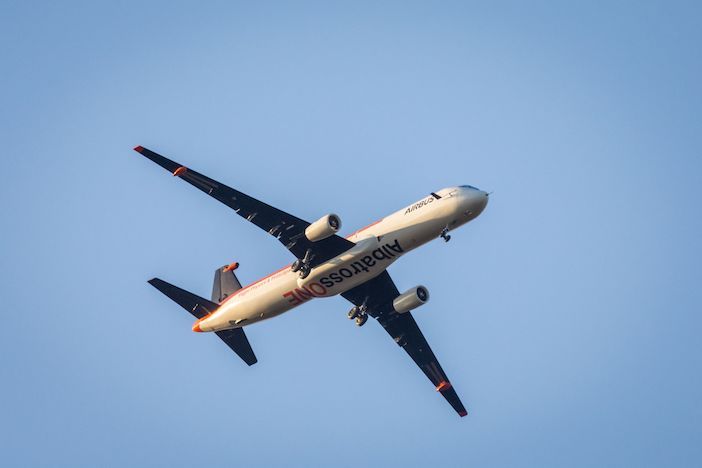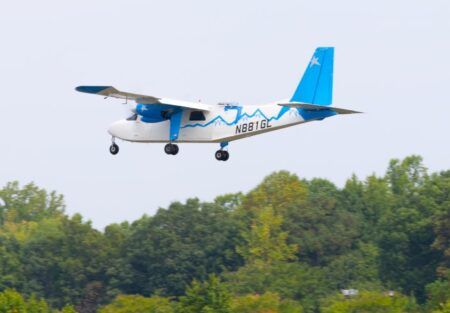Engineers form Airbus are developing an aircraft with hinged wing tips that “flap” while in-flight.
The design of the wing tips, which use a semi-aeroelastic hinge, has been inspired by bird-flight. They have been fitted to a scale-model aircraft which is being tested in Filton, UK.
The concept is intended to reduce drag and overall wing weight, while combating the effects of turbulence and wind gusts.
Folding wings are used by fighter jets that are stored on aircraft carriers. Boeing is also developing the 777X with folding wing tips, needed so it can fit standard airport gates, for civilian use.
Known as AlbatrossOne, the remote-controlled model has already taken its first flights to prove the concept. The research team is now conducting further testing before the demonstrator, which is based on the manufacturer’s A321 aircraft, is scaled-up further.
Tom Wilson, loads and aeroelastics engineer at Airbus said, “This is the first aircraft to trial in-flight, freely-flapping wing tips to relieve the effects of wind gusts and turbulence. We drew inspiration from nature – the albatross marine bird locks its wings at the shoulder for long-distance soaring but unlocks them when wind-gusts occur or maneuvering is required.
“The AlbatrossOne model will explore the benefits of unlockable, freely-flapping wing tips – accounting for a up to a third of the length of the wing – to react autonomously during in-flight turbulence and lessen the load on the wing at its base, so reducing the need for heavily reinforced wing boxes.”
The hinge is combined with a lock and a clutched actuator to produce an adaptive system which releases the wing tip in response to a severe gust or manoeuvre, but then “recovers” to its planar position afterwards to continue efficient flight.
Jean-Brice Dumont, Airbus’ executive vice-president of engineering said, “When there is a wind gust or turbulence, the wing of a conventional aircraft transmits huge loads to the fuselage, so the base of the wing must be heavily strengthened, adding weight to the aircraft.
“Allowing the wing-tips to react and flex to gusts reduces the loads and allows us to make lighter and longer wings – the longer the wing, the less drag it creates up to an optimum, so there are potentially more fuel efficiencies to exploit.”
The first test flights of AlbatrossOne were concluded in February after a 20-month development project. Research and simulations have been done to understand the physics of the wing tip, including how the orientation of the hinge’s axis can be used to avoid flutter and the levels of load alleviation that appear to be achievable, which according to the research is approaching 20% in terms of wing root bending moment.
The static and dynamic stability of the wing tip was also verified by wind tunnel tests at the University of Bristol.
The flight-test AlbatrossOne model has been constructed from carbonfibre and glass fibre-reinforced polymers, as well as 3D printed components.
Initial testing of AlbatrossOne has examined the demonstrator’s stability with the wing-tips locked and completely unlocked. Research engineer James Kirk said, “The next step is to conduct further tests to combine the two modes, allowing the wing-tips to unlock during flight and to examine the transition.”





